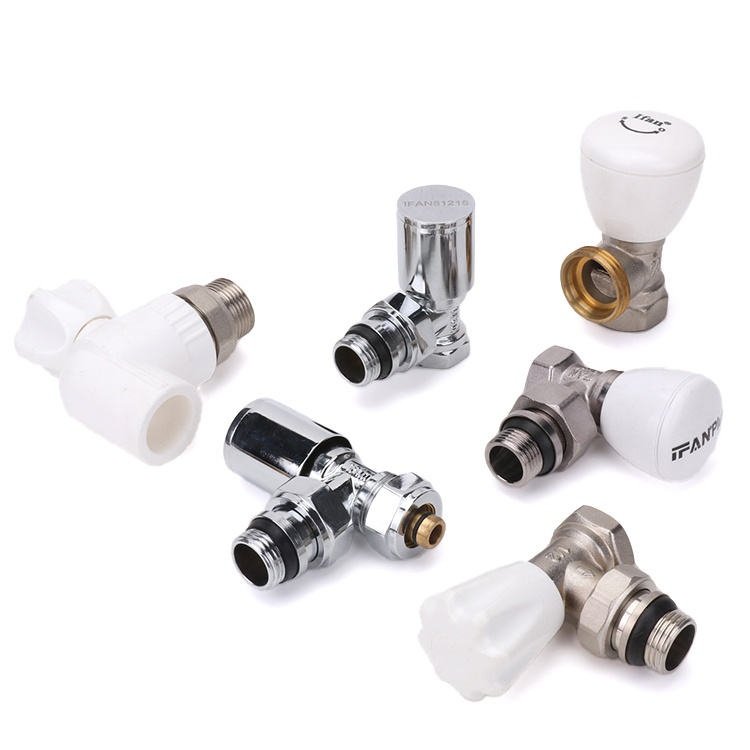If your steam radiator isn’t heating up, you’re likely dealing with cold rooms, unhappy customers, or even delayed projects. For business owners like Antonio in Russia, unstable radiator performance can lead to lost sales, damaged reputations, and costly replacements. The root cause? Often, it’s faulty valves, airlocks, or sludge buildup. But there’s a solution: high-quality valves that ensure consistent heat and reliability. In this article, we’ll break down the technical fixes and cost-effective upgrades to keep your radiators—and your business—running smoothly.
If your steam radiator isn’t getting hot, common culprits include air trapped in the system, a malfunctioning thermostatic radiator valve, sludge blocking water flow, or incorrect valve settings. Fixing these issues often requires bleeding the radiator, replacing faulty valves, or flushing the system. For long-term reliability, upgrade to high-quality valves like IVALVECRAFT’s thermostatic radiator valves, designed for stable performance and easy installation.
Keep reading to learn how steam valves work, repair costs, and why choosing the right supplier matters for your bottom line.

What Does a Steam Control Valve Do?
A steam control valve regulates the flow of steam into your radiator. Think of it as a traffic cop: it opens to let steam in, heating the radiator, and closes to stop the flow once the room reaches the desired temperature. For businesses like Antonio’s, which rely on consistent heating for warehouses or retail spaces, a faulty valve can mean uneven heating, energy waste, or even system breakdowns.
Thermostatic radiator valves (like IVALVECRAFT’s one-pipe steam thermostatic radiator valve) go a step further. They automatically adjust steam flow based on room temperature, eliminating manual tweaking. This is crucial for large buildings where temperature control impacts comfort and operational costs. For example, a broken valve might cause one room to overheat while another stays cold, leading to customer complaints or halted production.
Key features to look for:
- Durable brass construction (resists corrosion from steam)
- Precision temperature control (±1°C accuracy)
- Easy thermostatic radiator valve installation (fits standard radiators)
IVALVECRAFT’s valves are tested for 10,000+ cycles to ensure they withstand heavy use—perfect for commercial heating systems in cold climates like Russia.
How Much Does It Cost to Replace a Steam Radiator Valve?
Replacement costs depend on valve type, labor, and location. On average:
- Basic manual valves: $15–$40 per unit (bulk OEM orders lower this cost)
- Thermostatic radiator valves: $50–$120 per unit (smart models cost more)
- Labor: $80–$150/hour for professional installation
For businesses, bulk upgrades are smarter. For example, replacing 100 valves with IVALVECRAFT’s thermostatic radiator valves might cost $5,000–$12,000 upfront but cut energy bills by 20% annually. Antonio, sourcing from China, could save 30–50% compared to European brands like Honeywell, without sacrificing quality.
Hidden costs to avoid:
- Cheap valves that fail within a year (leading to repeat replacements)
- Delayed shipments (missed heating seasons = lost sales)
- Poorly trained installers (incorrect thermostatic radiator valve installation causes leaks)
IVALVECRAFT offers OEM pricing, fast shipping to Russia, and detailed installation guides to keep projects on time and under budget.
What Are the Two Valves on a Radiator For?
Radiators typically have two valves:
- Inlet valve (usually on the bottom): Controls steam flow into the radiator.
- Outlet valve (on the opposite side): Lets condensed water (condensate) return to the boiler.
In one-pipe steam systems, both valves are critical. If the inlet valve is stuck closed, no steam enters. If the outlet valve is blocked, condensate pools in the radiator, preventing steam from filling the space. This is why thermostatic radiator valve installation matters—it automates the inlet valve’s opening/closing, while the outlet valve works passively.
For older systems, sludge buildup often clogs the outlet valve. Flushing the system or installing a dirt separator (like IVALVECRAFT’s manifolds) can prevent this. Pro tip: Pair thermostatic valves with mixing pump heating centers to balance heat distribution across large buildings.
Summary
A cold steam radiator often points to valve issues, airlocks, or sludge. Fixing these requires technical know-how and reliable parts. For B2B buyers like Antonio, choosing IVALVECRAFT means access to durable valves, competitive OEM pricing, and on-time shipments—avoiding the headaches of unstable performance or missed deadlines.
Choose IVALVECRAFT, choose reliable partner, enjoy the high quality and best service.


